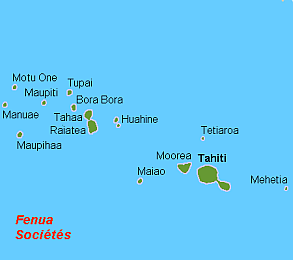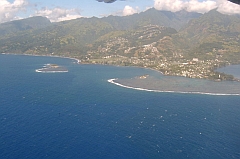
Exploring the history and experiences of mixed heritage persons and inter-racial relationships across the world

Exploring the history and experiences of mixed heritage persons and inter-racial relationships across the world
 Not quite in the middle of the huge but relatively calm Pacific Ocean lays a group of islands known as French Polynesia. The 130 or so islands stretch over 2.5 million square kilometres of ocean. The islands which were officially united in 1889 are now an overseas collectivity of France and so its citizens enjoy French and EU citizenship. The capital of the islands is Papeete which is situated on the largest island, Tahiti.
Not quite in the middle of the huge but relatively calm Pacific Ocean lays a group of islands known as French Polynesia. The 130 or so islands stretch over 2.5 million square kilometres of ocean. The islands which were officially united in 1889 are now an overseas collectivity of France and so its citizens enjoy French and EU citizenship. The capital of the islands is Papeete which is situated on the largest island, Tahiti.
Tahiti is believed to have originally been settled between 300 and 600 AD by Polynesians from Fiji, Samoa or Tonga but European settlement started first with the missionaries with Spanish priests spending a year in 1774 and the London Missionary Society bringing Protestantism around 1797. This eventually led to a religious conflict that resulted in Tahiti becoming a French protectorate to allow Catholic missionaries to carry out their work. Prior to the missionaries there had been numerous ship landings in these parts including ones by James Cook and by the father of evolution, Charles Darwin.
At the time of first contact, it was estimated that Tahiti itself sustained some 40,000 people with another 20,000 or so on the surrounding islands. Mirroring the pattern found elsewhere, the European ships brought with them diseases such as small pox, scarlet fever, typhoid fever and tuberculosis to which the local Polynesians had no immunity. This led to a reduction in the population to the point that the 1880 census counted fewer than 6,000 native Tahitians.
Native Tahitians call themselves 'true Tahitians' (Ta'ata Tahiti Mau) to distinguish from part-Europeans (Ta'ata 'afa Popa'a) or more commonly known by the French term ‘Demi’ which literally means half. The use of the French word ‘Demi’ in this context is a little confusing since the usual terms in the French language for mixed race people are ‘Creole’ or the even more popular ‘Métis’ – this term also being used by a mixed heritage aboriginal community in the Canada and the USA.
 However, it is not that simple. The use of the terms ‘native’ and ‘demi’ is not strictly racial. The pre-Christianity laxity to marriage and sexual intercourse in Tahitian culture means that most Tahitians have some European ancestry. The defining feature of the ‘Demis’ is their assimilation into European, mainly French, culture what some French administrator s saw as ‘evolved Tahitians’. The Portuguese colonies had a similar class of people known as ‘assimilados’. Those of mixed heritage who continue to follow traditional Tahitian ways are not generally regarded as ‘Demis’. This brings to mind the Dutch East Indies, now Indonesia, where the to be recognised as an Indo-European, the offspring had to be acknowledged by the European parent otherwise, despite the racial mix, the child was regarded and treated as ethnic Indonesian. Another similarity with the Indonesian experience and mirroring the Goan and other colonial situations, this recognised mix-race community dominates in the middle class occupations such teaching, nursing, middle civil service and they dominate the political arena whilst the Europeans dominate in the executive government and in the multi-national business areas.
However, it is not that simple. The use of the terms ‘native’ and ‘demi’ is not strictly racial. The pre-Christianity laxity to marriage and sexual intercourse in Tahitian culture means that most Tahitians have some European ancestry. The defining feature of the ‘Demis’ is their assimilation into European, mainly French, culture what some French administrator s saw as ‘evolved Tahitians’. The Portuguese colonies had a similar class of people known as ‘assimilados’. Those of mixed heritage who continue to follow traditional Tahitian ways are not generally regarded as ‘Demis’. This brings to mind the Dutch East Indies, now Indonesia, where the to be recognised as an Indo-European, the offspring had to be acknowledged by the European parent otherwise, despite the racial mix, the child was regarded and treated as ethnic Indonesian. Another similarity with the Indonesian experience and mirroring the Goan and other colonial situations, this recognised mix-race community dominates in the middle class occupations such teaching, nursing, middle civil service and they dominate the political arena whilst the Europeans dominate in the executive government and in the multi-national business areas.
The small to big local based business field is dominated by the Chinese, who originally were imported as indentured labour in the 1860s. Their descendants and later immigration particularly in the 1920s now make up about 12% of the population. Their relatively rare inter-racial mixing with European or native Tahitians gives rise to those labelled as ‘Demi-Chinoise’.
 At the 1988 French Polynesian census, which was the last one to question ethnicity, about 9% of the population regarded themselves as ‘Demis’, another 7% classified themselves just as mixed and about 5% were of Asian, mainly Chinese descent. Europeans made up some 12% of the population. These sections of the population are concentrated on Tahiti and particularly around the capital.
At the 1988 French Polynesian census, which was the last one to question ethnicity, about 9% of the population regarded themselves as ‘Demis’, another 7% classified themselves just as mixed and about 5% were of Asian, mainly Chinese descent. Europeans made up some 12% of the population. These sections of the population are concentrated on Tahiti and particularly around the capital.
Whilst the Tahitians, similarly to the Brazilians, like to claim that there is no racism in their society, there have been a few cases, mainly xenophobic ranting by politicians, of negative racial feelings especially against the Europeans by pro-Independence politicians and against the Chinese particularly as regards their relevant dominance of the business sector. So far, this has been mainly spoken and has not resulted in any major racial tensions.
LINKS